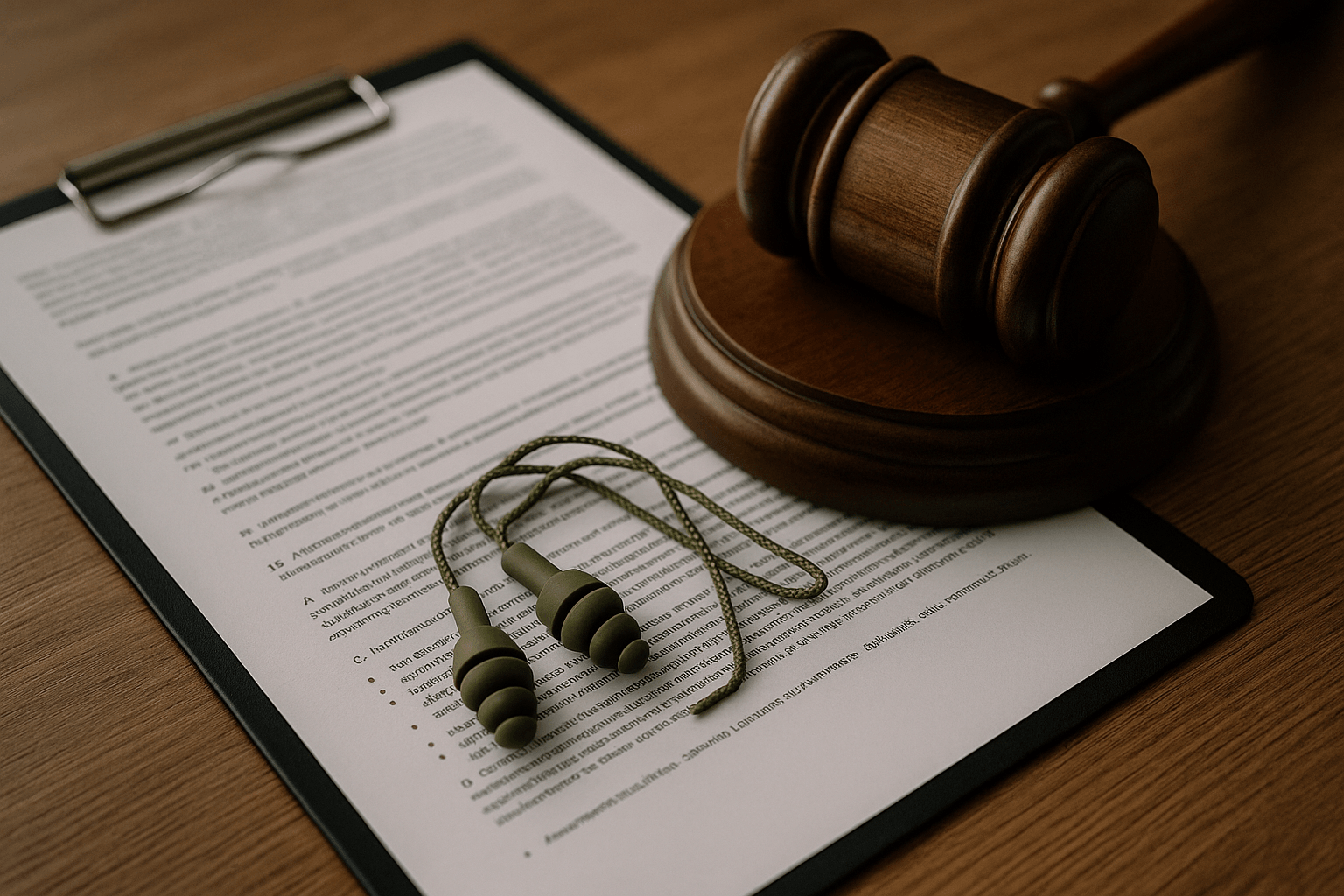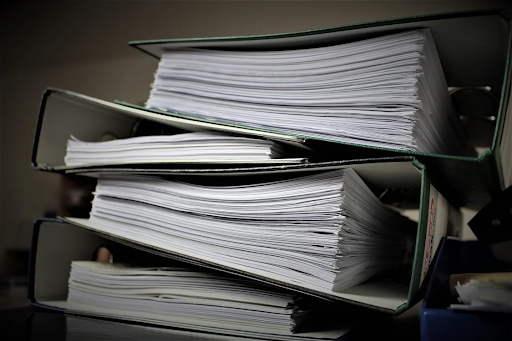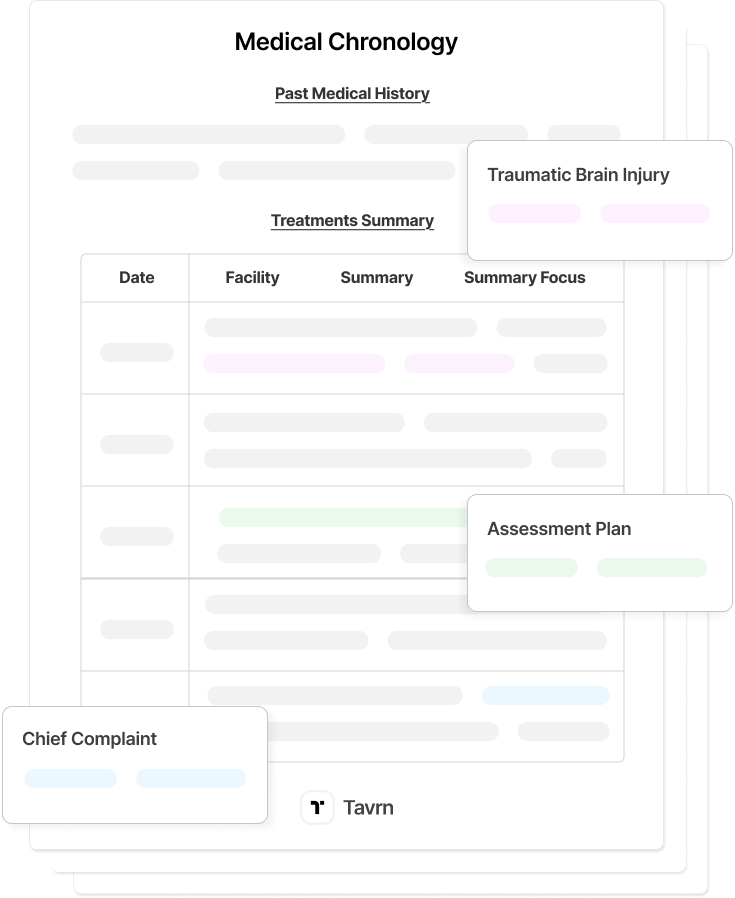Manual medical record retrieval limits firm efficiency and profitability. Paralegals spend days chasing down files instead of working on strategic case analysis.
Slow retrieval also impacts case momentum. Without complete medical documentation, attorneys cannot build compelling arguments for their clients. Delayed demands encourage drawn-out negotiations that demoralize plaintiffs and push them to settle for less.
This article examines the challenges legal teams face with traditional retrieval methods and explains how AI helps move things faster.
How Manual Retrieval Negatively Impacts Your Firm
Manual processes consume disproportionate staff resources, add administrative overhead, and threaten case momentum.
Productivity Loss
Instead of supporting case strategy and client advocacy, paralegals regularly spend hours on inefficient administrative tasks. Creating medical chronologies alone averages 8–10 hours per case for standard matters, escalating to 20+ hours for catastrophic or complex cases.
When experienced paralegals spend the majority of their time on document processing rather than legal analysis, job satisfaction decreases and retention becomes more difficult. NALA’s 2024 Utilization & Compensation Report found that addressing workload management challenges is essential for improving paralegal job satisfaction and retention.
Administrative Complexity
HIPAA compliance requirements are standardized at the federal level, but the way providers implement them often varies. Each healthcare facility uses its own authorization forms, request procedures, and response timelines, creating workflow differences that paralegals must navigate individually.
Electronic health record system fragmentation requires manual assembly of record packets across disparate platforms. Paralegals must contact multiple providers, coordinate with various administrative departments, and track requests through systems that lack integration with legal practice management software.
Unpredictable Response Times
Provider response times remain inconsistent across healthcare systems. Some facilities respond within days, while others require weeks or months to process requests. Lost or incomplete record transfers force paralegals to repeat requests and follow up repeatedly on missing documentation.
Multi-location patient treatment histories complicate retrieval processes. Patients often receive care from multiple providers across different healthcare systems, requiring paralegals to identify all relevant sources and coordinate simultaneous requests without missing critical documentation that could impact case outcomes.
Case timeline delays compound these operational challenges. Slow record retrieval directly jeopardizes statute of limitations deadlines and settlement timings, not to mention competitive positioning against firms with more efficient systems.
What Is AI in Medical Record Retrieval?
Automated medical record retrieval combines artificial intelligence and direct system integration (API) to replace manual provider outreach and document collection processes. AI systems leverage advanced optical character recognition (OCR) and natural language processing (NLP) to identify, extract, and organize relevant medical information from retrieved records.
Instead of paralegals making phone calls and sending faxes, AI systems handle communication, document retrieval, and record organization through direct connections with healthcare provider systems.
How AI Capabilities Address Manual Retrieval Challenges
Automated Provider Outreach and Communication
AI systems integrate directly with healthcare provider databases via Application Programming Interfaces (APIs). Standardized request formatting ensures compliance with provider-specific requirements, and automated submission processes handle multiple requests simultaneously across different healthcare systems.
- Real-time status tracking provides retrieval progress visibility.
- Automated notification systems alert paralegals when records arrive, when additional information is needed, or when retrieval encounters delays.
- Priority queuing escalates urgent cases for expedited processing.
Intelligent Record Processing and Organization
Once retrieved, AI systems apply advanced document classification and indexing to organize medical records chronologically and by medical specialty. Automated organization eliminates the manual sorting and filing that consumes paralegal time after record retrieval.
- Duplicate detection algorithms identify and consolidate redundant documentation across multiple providers, creating clean record sets without unnecessary repetition.
- Quality assurance checks verify record completeness and flag potential gaps that require additional retrieval efforts.
- Intelligent timeline creation automatically organizes medical events into coherent chronologies that highlight critical incidents, treatment patterns, and medical opinions relevant to case strategy.
Automated chronologies provide immediate case insights that support early evaluation and settlement preparation.
Streamlined Workflow Integration
Modern AI retrieval systems integrate seamlessly with existing case management platforms through API connections and data export capabilities, eliminating manual data consolidation or organizational and indexing concerns.
Centralized dashboards help paralegals track multiple cases simultaneously, monitor retrieval status across active matters, and prioritize follow-up activities based on case urgency and deadline requirements.
Automated workflow triggers can initiate downstream processes once records arrive, including:
- Scheduling medical expert consultations.
- Beginning settlement demand preparation.
- Updating case status communications.
Choosing the Right AI Solution for Medical Record Retrieval
When evaluating AI platforms for medical record retrieval, focus on four critical capabilities:
- HIPAA compliance is non-negotiable
HIPAA compliance forms the foundation for any medical record retrieval solution used in legal practice. Verify that potential vendors maintain comprehensive Business Associate Agreements, implement required administrative and technical safeguards, and demonstrate ongoing compliance monitoring through regular audits and certifications.
- Provider network coverage determines practical utility
Evaluate whether solutions can access the healthcare systems most relevant to your practice area and geographic market. Limited provider networks create gaps that force continued reliance on manual processes for significant portions of your caseload.
- Accuracy metrics must meet legal standards
Review vendor documentation for accuracy rates specific to medical record analysis, chronology development, and information extraction capabilities. Request examples of outputs to evaluate quality and completeness for your case types.
- Simple integration
Integration determines both implementation success and user adoption. New tools should not negatively impact existing case management systems. Verify API connectivity, data export formats, and compatibility with your current legal software stack to prevent workflow disruption and manual data transfer requirements.
AI Medical Records Implementation: Best Practices for Legal Teams
Successfully deploying AI medical record retrieval requires careful planning and systematic execution:
- Vendor evaluation and selection
Compare HIPAA compliance standards, provider network coverage, processing accuracy rates, and integration capabilities. Request pilot programs or demonstrations with your actual case types to evaluate output quality and system reliability.
- Change management preparation
Identify internal champions among experienced paralegals and legal staff who can advocate for adoption. Develop clear protocols for quality review of AI outputs that maintain professional responsibility standards while leveraging automation capabilities.
- Staff training and onboarding
Plan comprehensive training schedules that accommodate busy paralegal workflows, and make sure that training covers both technical platform usage and quality assurance procedures. Mentorship programs that pair tech-comfortable staff with those requiring additional support work well.
- System integration planning
Work with IT teams to ensure API connectivity with existing case management systems. Test data export formats and workflow integrations before full deployment, and plan for backup capacity during transition periods.
- Pilot program execution
Start with a limited number of cases or specific practice areas to validate system performance. Gather detailed feedback from paralegals on workflow disruptions and efficiency gains, and document lessons learned before scaling to full implementation.
- Quality assurance protocols
Establish review procedures for AI-generated chronologies and retrieved records. Define accuracy standards and error reporting processes, and create escalation procedures for complex cases where human intervention is required.
How To Measure Automated Medical Record Retrieval Success
Tracking specific metrics will quantify your operational improvements and justify continued investment in AI retrieval technology:
Begin with time-to-retrieval analysis.
- Measure average retrieval times before and after implementation.
- Track reduction in manual follow-up activities and provider communication.
- Document the bottlenecks that open up.
These time savings directly impact paralegal productivity.
- Monitor paralegal shifts from administrative tasks to strategic legal work.
- Measure the reduction in overtime hours spent on record processing.
- Track improvements in case preparation quality and completeness.
Operational efficiency gains accelerate case preparation timelines.
- Track time from intake to settlement demand preparation.
- Measure reduction in statute of limitations pressure and deadline management stress,
- Document faster case resolution and settlement negotiation timelines.
Quality improvements complement speed gains.
Compare the reduction in missing documentation and incomplete case files against improvements in AI-powered case evaluation accuracy and settlement outcome predictions.
Client satisfaction indicators provide the ultimate success measure.
- Track client retention rates and referral generation improvements.
- Document improved client confidence from faster case progression and more thorough documentation.
These relationship improvements often translate into practice growth and competitive advantage in the referral market.
Reduce Your Medical Record Retrieval Bottleneck
Manual processes create operational constraints that limit case volume and delay settlements. Automated systems help firms handle more cases efficiently and maintain quality standards that drive better client outcomes.
AI transforms weeks-long manual retrieval processes into automated workflows that free paralegals from administrative busywork. The technology delivers measurable results: faster retrieval times, reduced processing costs, and enhanced case handling capacity.
Want to learn more about AI-powered medical record retrieval? Get a demo.

















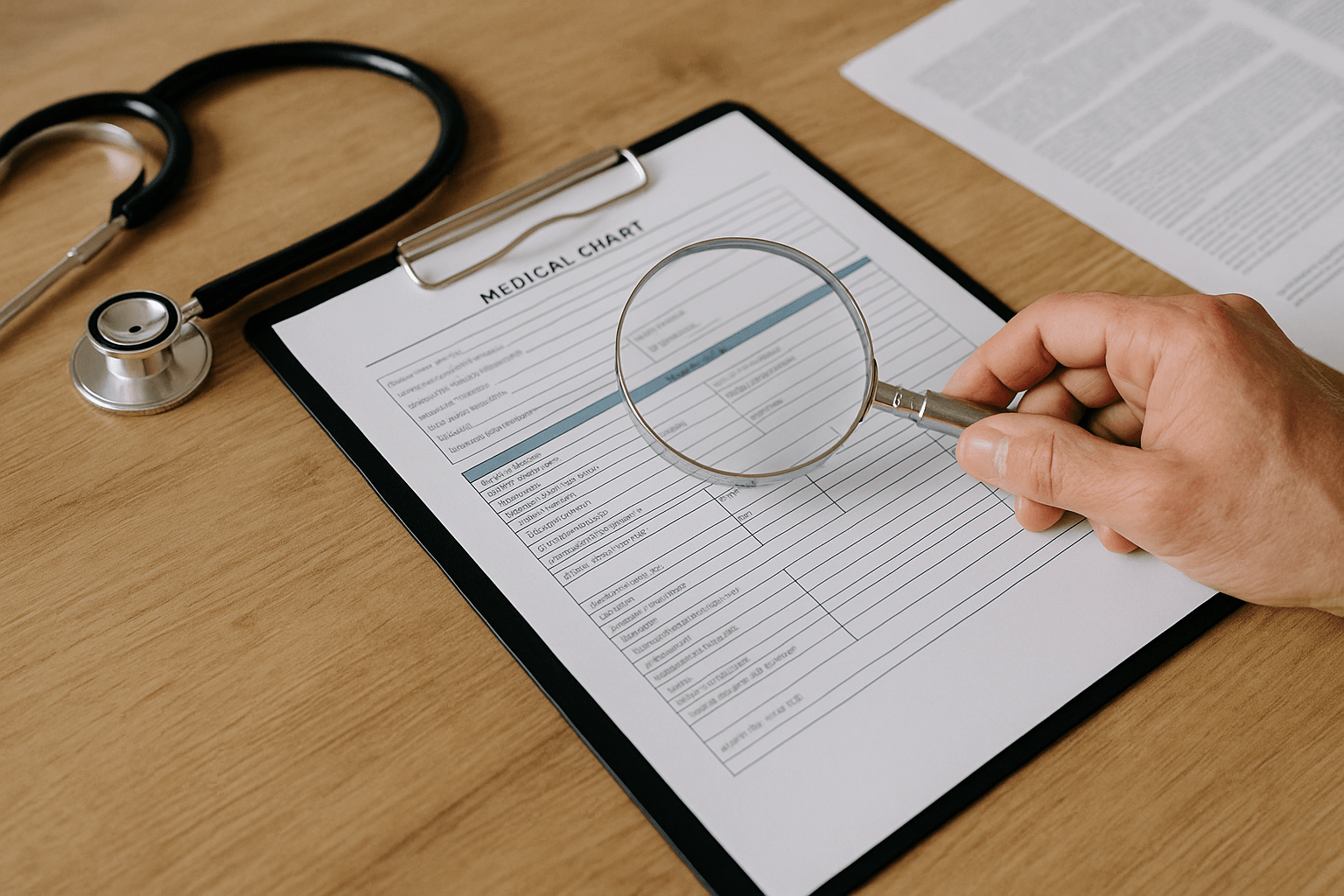


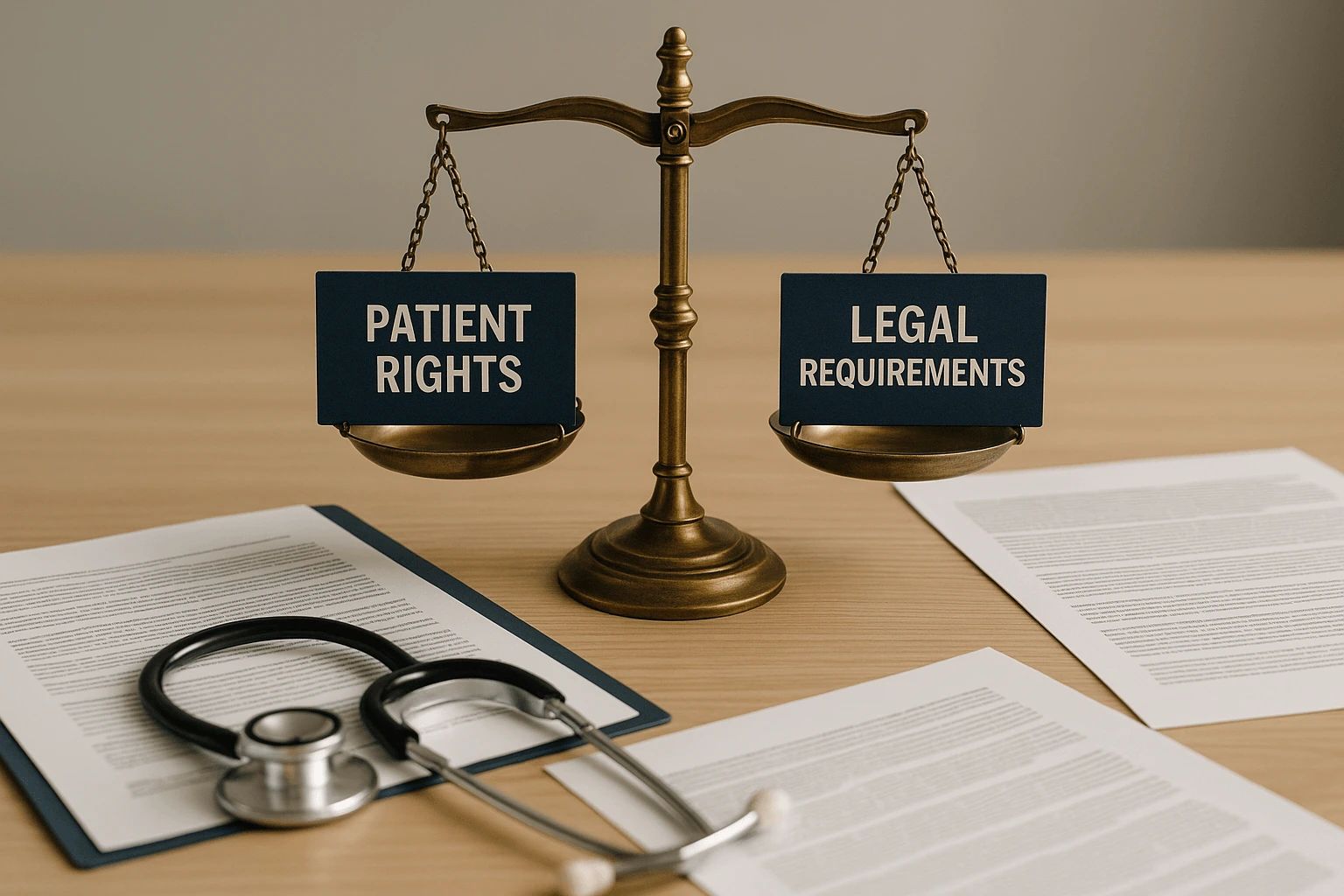
.webp)
.webp)


